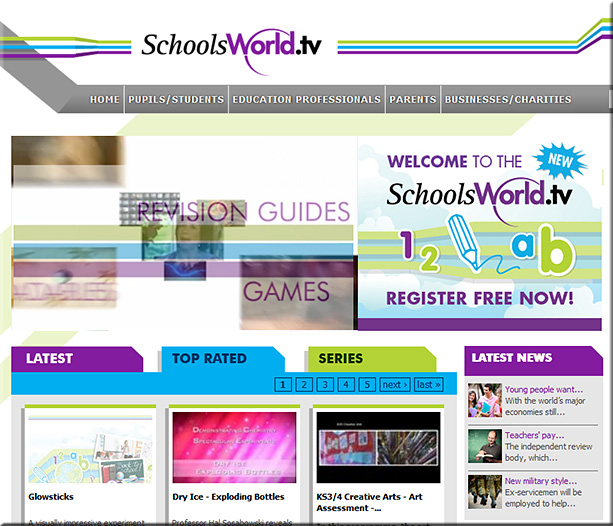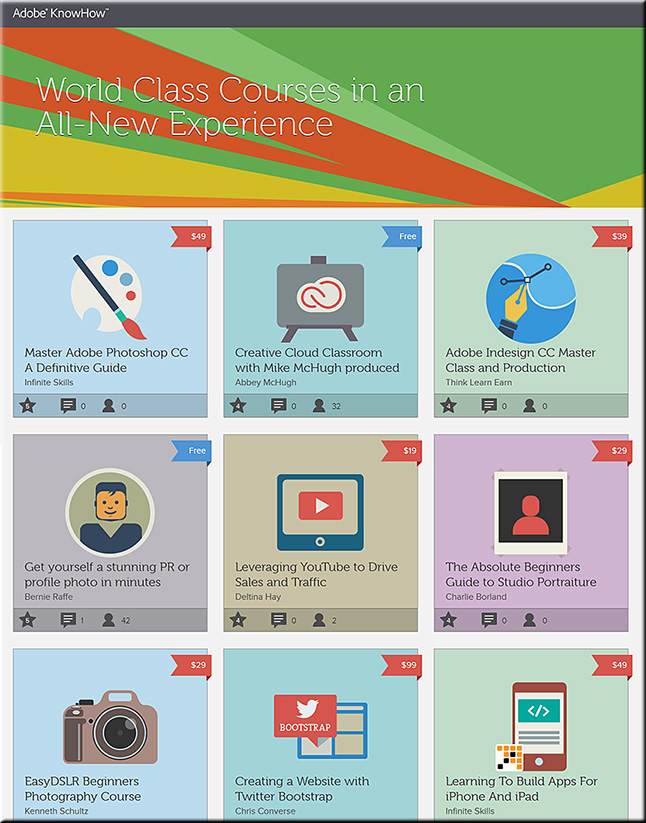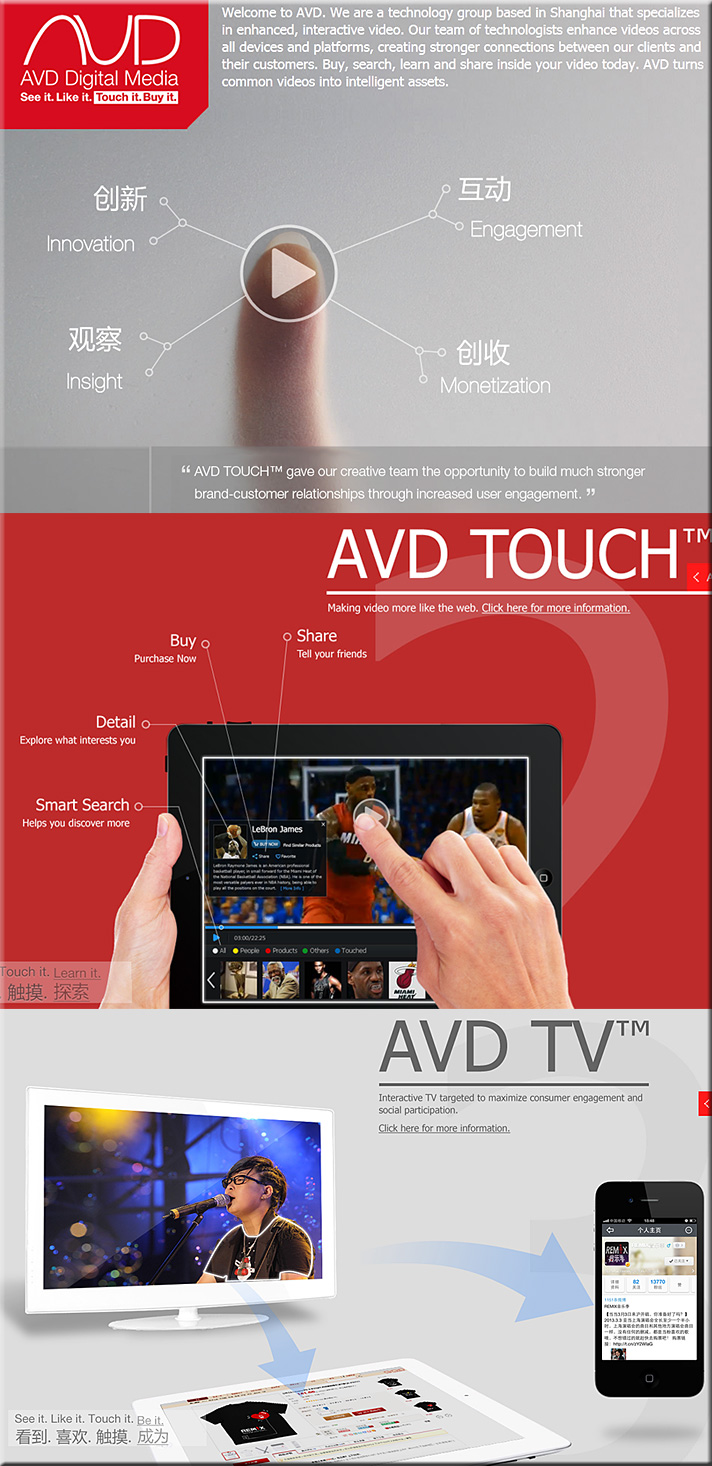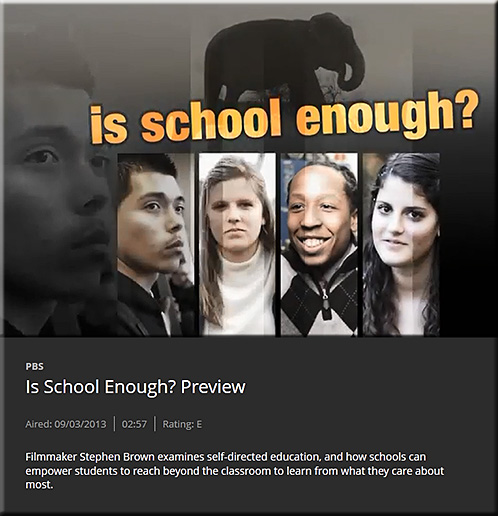
.
About the program (emphasis DSC):
Thanks to digital media, the Internet and new advances in understanding how students learn, educators are beginning to appreciate the importance of breaking out of the classroom and into the wider world. There’s a growing understanding that learning should not just be preparation for life, but is actually “life itself.”
Is School Enough? documents vivid examples of where new modes of learning and engagement are taking hold and flourishing. Featuring nationally recognized educators and researchers, Stephen Brown’s powerful stories show that when students have the opportunity to explore real interests and problems, they step up and perform at the highest level. This new approach reaches motivated students as well as kids that educators call “the bright and bored,” helping these learners tune in rather than drop out.
Is School Enough? introduces parents, educators, and everyone passionate about learning to:
• Students in Maine who work with veterinary experts and digital apps to prepare a new home for a retired circus elephant.
• Young people worldwide who use the online Harry Potter Alliance to launch meaningful social justice initiatives.
• A curious and creative teen who crafts her own educational experience based on her passion for natural healing and yoga.
• A young man in Oakland who produces state-of-the-art music videos to engage his community—and himself.
Through the voices of these inspired students and America’s foremost education thought leaders, Is School Enough? provides insight into an essential new understanding of what education can be in the 21st century. Is School Enough? is the second in a series of programs about kids, digital media and education. The first program, Digital Media: New Learners of the 21st Century explores students claiming digital media as a means of connecting, communicating, creating, and learning, while interpreting its importance and providing a window into 21st-century education.









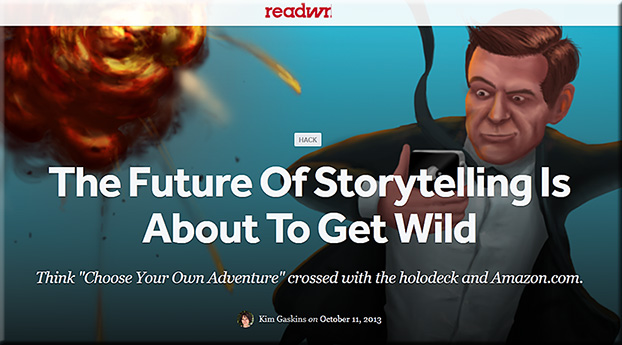
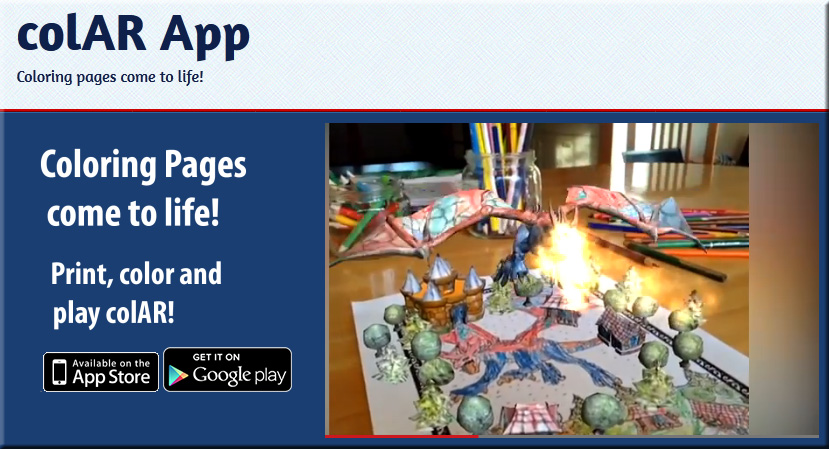
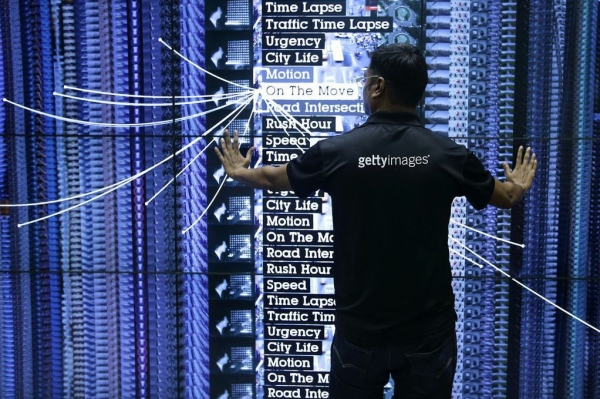

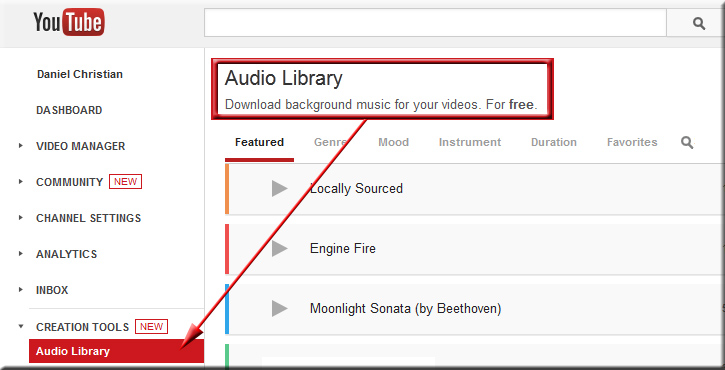

![The Living [Class] Room -- by Daniel Christian -- July 2012 -- a second device used in conjunction with a Smart/Connected TV](http://danielschristian.com/learning-ecosystems/wp-content/uploads/2012/07/The-Living-Class-Room-Daniel-S-Christian-July-2012.jpg)
